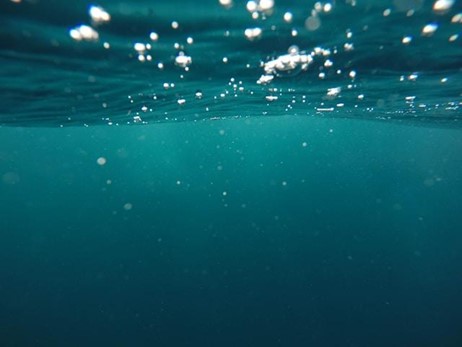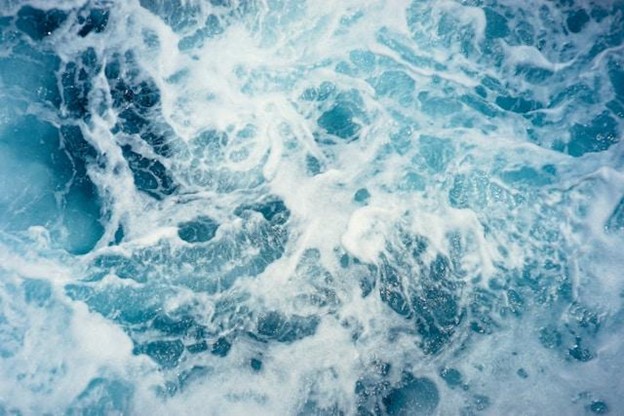John Wnek has been an adjunct faculty member at Stockton University for the past decade and currently serves as the supervisor of science and research at the Marine Academy of Technology and Environmental Science (MATES), NJ, a role he has held for 18 years. He co-chairs the Save Barnegat Bay Student Grant Program and oversees student research projects, with a specific focus on studying pathogens in Toms River, NJ.
John is deeply involved in research as a co-Principal Investigator of the Barnegat Bay Diamondback Terrapin project, where he investigates the nesting ecology of diamondback terrapins. He also co-chairs the Diamondback Terrapin Working Group, which is dedicated to the research, conservation, and education related to diamondback terrapins. His research efforts have resulted in several publications focusing on terrapin nesting ecology, local terrapin populations, and coastal dune ecosystems.
Additionally, John has developed educational materials, including lessons and curricula centered around the Barnegat Bay Watershed, covering topics in oceanography, aquatic ecology, and environmental science. His current projects include initiatives to remove derelict fishing gear from Barnegat Bay waters and evaluating the effectiveness of bycatch reduction devices on blue crab traps. Addressing local marine debris is challenging, but there is a global aspect of marine debris that is becoming an increasingly growing problem. Understanding how ocean currents affect the movement and accumulation of marine debris is essential for developing effective strategies to combat this growing environmental problem.
The world’s oceans are vast and dynamic, governed by powerful currents that shape marine ecosystems and influence global climate patterns. However, these currents also play a crucial role in the distribution of marine debris, transporting waste across vast distances and concentrating it in specific regions.
John Wnek Discusses the Mechanics of Ocean Currents
Ocean currents are large-scale flows of seawater that move continuously through the world’s oceans. They are driven by a combination of wind, the Earth’s rotation (Coriolis Effect), temperature differences, and salinity gradients. Currents can be broadly categorized into surface currents and deep-water currents.
- Surface Currents: These currents occur in the upper 1,200 feet of the ocean and are primarily driven by wind. The most notable surface currents include the Gulf Stream in the Atlantic Ocean, the Kuroshio Current in the Pacific Ocean, and the Antarctic Circumpolar Current.
- Deep-Water Currents: Also known as thermohaline circulation, these currents are driven by differences in water density, which is affected by temperature (thermo) and salinity (haline). The global conveyor belt is a major deep-water current system that circulates water throughout the world’s oceans.
The Journey of Marine Debris
Marine debris, predominantly composed of plastic waste, enters the ocean through various sources such as rivers, coastal runoff, shipping activities, and illegal dumping. John Wnek explains that once in the ocean, this debris is caught up in the currents, which transport it across great distances. The movement of marine debris is influenced by several factors:
- Buoyancy and Degradation: Lighter debris, such as plastic bottles and bags, tends to float on the surface, while heavier debris may sink to different depths. Over time, exposure to sunlight and saltwater causes plastics to break down into smaller fragments known as microplastics.
- Wind and Waves: Wind patterns and wave action can push floating debris towards certain areas, especially coastlines and bays.
- Gyres: Large systems of rotating ocean currents, known as gyres, play a significant role in concentrating marine debris. There are five major oceanic gyres: the North Atlantic, South Atlantic, North Pacific, South Pacific, and Indian Ocean gyres.
The Great Pacific Garbage Patch
One of the most infamous examples of marine debris concentration is the Great Pacific Garbage Patch (GPGP). John Wnek of New Jersey reports that in the North Pacific Gyre, the GPGP is a vast area where marine debris accumulates due to the convergence of ocean currents. Contrary to the popular image of a solid “island” of trash, the GPGP consists of a high concentration of microplastics and larger debris dispersed over a massive area, making cleanup efforts extremely challenging.
 Regional Impacts of Marine Debris Distribution
Regional Impacts of Marine Debris Distribution
The distribution of marine debris by ocean currents has significant impacts on different regions around the globe. These impacts vary based on the proximity to debris sources, local current patterns, and the presence of gyres.
- Coastal Areas: Coastal regions are often the first to feel the effects of marine debris. Beaches around the world, from the remote islands of the Pacific to the coastlines of developed nations, are littered with plastic waste. This not only poses a threat to marine life but also affects tourism and local economies.
- Island Nations: John Wnek reports that small island nations, particularly those in the Pacific, are disproportionately affected by marine debris. These islands often lack the resources to manage the influx of waste, leading to severe environmental and public health challenges.
- High Seas: In the open ocean, marine debris poses a threat to marine life, including fish, seabirds, and marine mammals. Animals can ingest or become entangled in debris, leading to injury or death. The presence of microplastics in the ocean also has implications for the entire marine food web, potentially affecting human health through seafood consumption. Microplastics can be accumulated up the food chain from plankton to the largest marine organisms. We are just learning about the effects of microplastics on marine life.
- Polar Regions: Recent studies have found that even remote polar regions are not immune to marine debris. Ocean currents transport debris to the Arctic and Antarctic, where it can affect pristine ecosystems and wildlife.
Addressing the Challenge
Understanding the role of ocean currents in the distribution of marine debris is crucial for developing targeted solutions. Efforts to combat marine debris must be multi-faceted and include:
- Prevention: Reducing the amount of waste entering the ocean is the most effective strategy. This involves improving waste management systems, banning single-use plastics, and encouraging the use of sustainable alternatives.
- Cleanup Initiatives: Various organizations and technologies are dedicated to removing marine debris from the ocean. John Wnek of New Jersey says that projects like The Ocean Cleanup and 5 Gyres Project aim to capture debris from gyres and other accumulation zones.
- International Cooperation: Marine debris is a global issue that requires international collaboration. Policies and agreements, such as the MARPOL Convention, aim to regulate marine pollution and encourage countries to take collective action.
- Public Awareness and Education: Raising awareness about the impacts of marine debris and promoting sustainable behaviors are essential for driving change. Educational campaigns can help individuals understand their role in reducing plastic pollution. John Wnek is working with partners to reduce local marine debris and preventing microplastics from entering local waterways, as well as reducing bycatch mortality in derelict crab traps.
Conclusion
John Wnek of New Jersey explains that ocean currents play a pivotal role in the distribution of marine debris, carrying waste across vast distances and concentrating it in specific regions. The impacts of this distribution are felt worldwide, affecting coastal communities, marine life, and even remote polar regions. Addressing the challenge of marine debris requires a comprehensive approach that includes prevention, cleanup efforts, international cooperation, and public education. By understanding the dynamics of ocean currents and their influence on marine debris, we can develop more effective strategies to protect our oceans and ensure a cleaner, healthier environment for future generations. Alone, it is a monumental task, but together we can make a difference.









